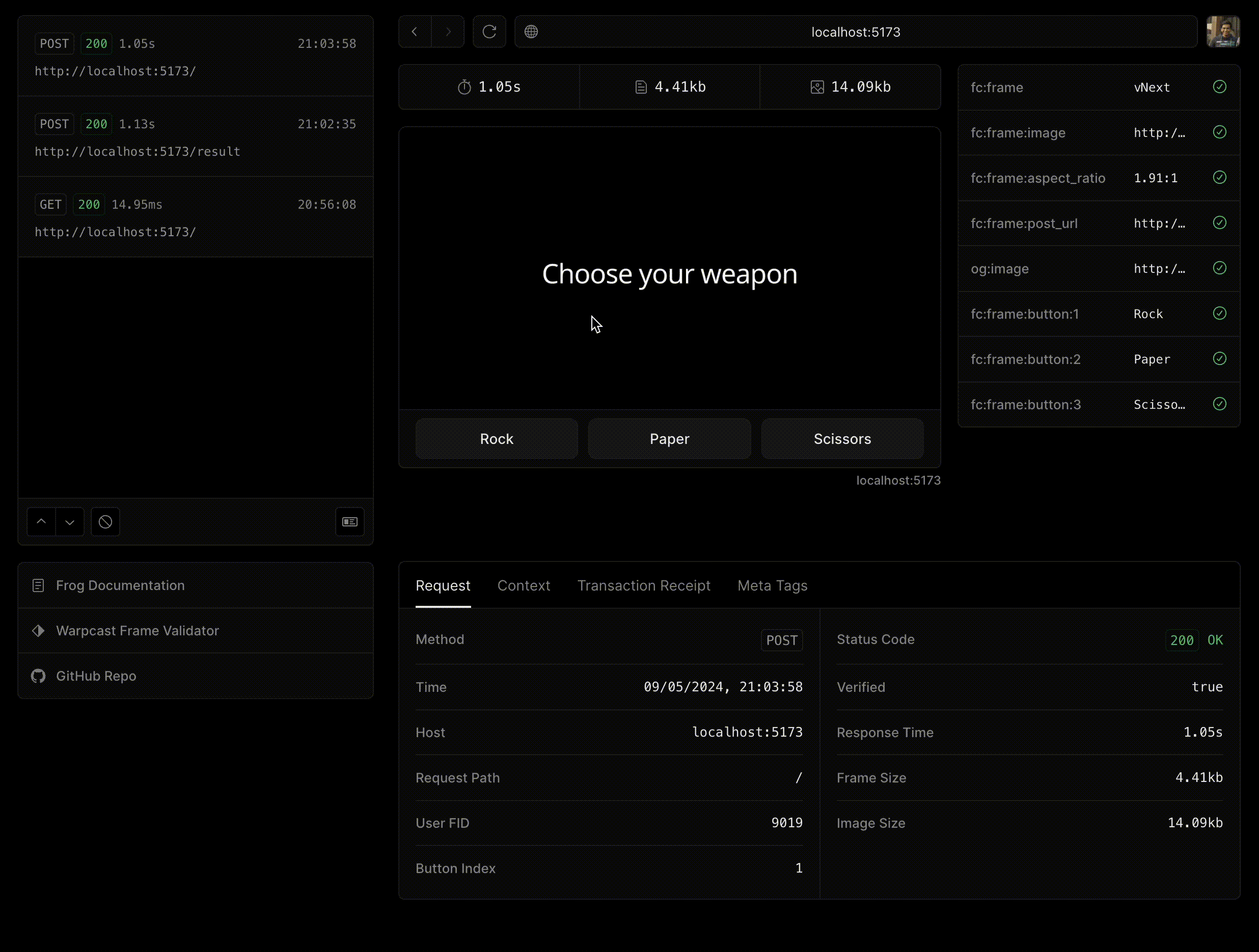app.frame("/result", (c) => {
const rand = Math.floor(Math.random() * 3);
const choices = ["rock", "paper", "scissors"];
const userChoice = choices[(c.buttonIndex || 1) - 1];
const computerChoice = choices[rand];
let msg = "";
if (userChoice === computerChoice) {
msg = "draw";
}
if (
(userChoice === "rock" && computerChoice === "scissors") ||
(userChoice === "paper" && computerChoice === "rock") ||
(userChoice === "scissors" && computerChoice === "paper")
) {
msg = "You win";
}
if (
(userChoice === "rock" && computerChoice === "paper") ||
(userChoice === "paper" && computerChoice === "scissors") ||
(userChoice === "scissors" && computerChoice === "rock")
) {
msg = "You lose";
}
return c.res({
image: (
<div
style={{
alignItems: "center",
background: "black",
backgroundSize: "100% 100%",
display: "flex",
flexDirection: "column",
flexWrap: "nowrap",
height: "100%",
justifyContent: "center",
textAlign: "center",
width: "100%",
}}
>
<div
style={{
color: "white",
fontSize: 60,
fontStyle: "normal",
letterSpacing: "-0.025em",
lineHeight: 1.4,
marginTop: 30,
padding: "0 120px",
whiteSpace: "pre-wrap",
display: "flex",
}}
>
{userChoice} vs {computerChoice}
</div>
<div
style={{
color: "white",
fontSize: 60,
fontStyle: "normal",
letterSpacing: "-0.025em",
lineHeight: 1.4,
marginTop: 30,
padding: "0 120px",
whiteSpace: "pre-wrap",
}}
>
{msg}
</div>
</div>
),
intents: [<Button action="/">Play again</Button>],
});
});




